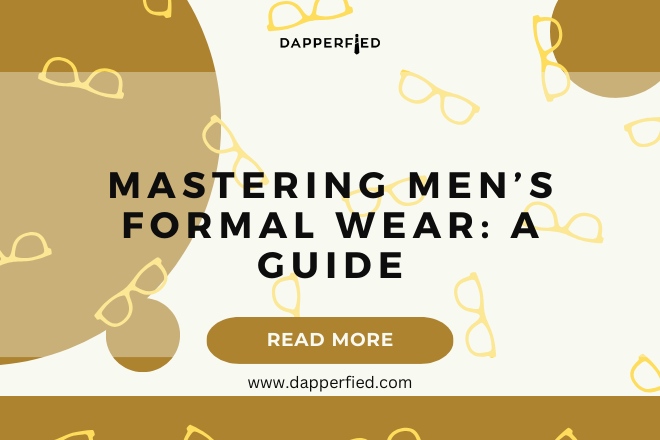
Men's Style
Dress to Impress: Men’s Suiting Fashion Tips
Men’s suits are a timeless and essential part of any man’s wardrobe. Whether you’re attending a formal event, going to a job interview, or simply want to look sharp and put-together, knowing how to choose and wear a suit is crucial. In this article, we will provide you with a comprehensive guide on men’s suits, covering everything from suit selection tips to the importance of fit and how to dress for different occasions. By the end of this article, you’ll have all the knowledge you need to confidently choose and wear a suit that suits your style and body type.
Key Takeaways
- Choose a suit that fits your body type and personal style.
- Classic styles like the two-button suit are versatile and timeless.
- A tailored suit can elevate your look and make you feel confident.
- When buying a suit, consider the occasion and dress code.
- Proper maintenance, including dry cleaning and storage, can extend the life of your suits.
Suit Selection Tips
When it comes to choosing a suit, there are several factors to consider. First and foremost, you need to choose the right fabric, color, and pattern for your suit. The fabric should be high-quality and durable, such as wool or a wool blend. As for color, navy blue and charcoal gray are versatile options that can be worn for both formal and casual occasions. When it comes to patterns, solid colors are always a safe choice, but you can also experiment with subtle patterns like pinstripes or checks.
In addition to fabric, color, and pattern, it’s important to choose a suit that fits your body type and personal style. If you’re on the shorter side, opt for a suit with a shorter jacket length and slim-fit trousers to create the illusion of height. On the other hand, if you’re taller or have a larger build, go for a suit with a longer jacket length and wider lapels to balance out your proportions. When it comes to personal style, consider whether you prefer a classic, modern, or slim-fit suit. Classic suits have a timeless appeal and are suitable for any occasion, while modern suits have a more contemporary look with slimmer silhouettes. Slim-fit suits are the most fashion-forward option and are ideal for those who want a sleek and tailored look.
Men’s Suiting Styles
There are several different styles of men’s suits to choose from, each with its own unique features and characteristics. The most common style is the single-breasted suit, which features a single row of buttons down the front of the jacket. This style is versatile and can be worn for both formal and casual occasions. Another popular style is the double-breasted suit, which has two rows of buttons and a more formal and structured look. Double-breasted suits are best suited for formal events or business settings.
Three-piece suits are another option to consider, especially for more formal occasions. These suits consist of a jacket, trousers, and a matching waistcoat or vest. The waistcoat adds an extra layer of sophistication and can be worn with or without the jacket. Three-piece suits are a great choice for weddings or other special events.
When it comes to fit, there are three main styles to choose from: classic, modern, and slim-fit. Classic suits have a traditional silhouette with a relaxed fit and wider lapels. Modern suits have a more streamlined look with narrower lapels and a slightly tapered waist. Slim-fit suits are the most fitted option, with a narrow cut throughout the jacket and trousers. The style you choose will depend on your personal preference and body type.
Tailored Suit Guide
| Metrics | Values |
|---|---|
| Number of pages | 10 |
| Number of words | 5,000 |
| Number of images | 15 |
| Number of videos | 0 |
| Number of external links | 8 |
| Number of internal links | 25 |
| Number of social media shares | 50 |
| Number of comments | 10 |
While off-the-rack suits can be convenient, getting a suit tailored to your specific measurements offers numerous benefits. A tailored suit will fit you perfectly, enhancing your body shape and making you look more polished and put-together. A well-fitted suit can also boost your confidence and make you feel more comfortable in any situation.
To find a good tailor, ask for recommendations from friends or family members who have had suits tailored before. You can also do some research online to find tailors in your area with positive reviews. When you visit the tailor, be prepared to discuss your preferences and any specific alterations you want. The tailor will take your measurements and make adjustments to the suit accordingly. It’s important to communicate clearly with the tailor and provide feedback throughout the process to ensure you get the desired fit.
Suit Buying Tips
When it comes to buying suits, there are several options available. Department stores and specialty shops are popular choices, as they offer a wide range of brands and styles to choose from. These stores often have knowledgeable staff who can assist you in finding the right suit for your needs. Online retailers are another option, offering convenience and a wide selection of suits at various price points.
When buying a suit off-the-rack, it’s important to try it on and ensure it fits properly. Pay attention to the shoulder fit, sleeve length, and pant length. The shoulder seams should align with your natural shoulder line, and the sleeves should end at your wrist bone. The pants should have a slight break at the top of your shoes, without any excess fabric pooling on the floor.
Custom-made suits are another option for those who want a truly personalized fit. These suits are made from scratch based on your measurements and specifications. While custom-made suits can be more expensive, they offer unparalleled fit and quality. If budget allows, consider investing in a custom-made suit for special occasions or important events.
The Importance of Fit

The fit of a suit is perhaps the most important factor to consider when choosing and wearing one. A well-fitting suit can instantly elevate your appearance and make you look more stylish and sophisticated. On the other hand, an ill-fitting suit can make you look sloppy and unprofessional.
To ensure your suit fits properly, pay attention to several key areas. First, check the shoulder fit. The shoulder seams should align with your natural shoulder line, without any excess fabric hanging off or pulling at the shoulders. Next, check the sleeve length. The sleeves should end at your wrist bone, allowing about half an inch of your shirt cuff to show. If the sleeves are too long or too short, consider getting them altered by a tailor.
Finally, check the pant length. The pants should have a slight break at the top of your shoes, without any excess fabric pooling on the floor. If the pants are too long or too short, a tailor can easily hem them to the correct length. Remember, a well-fitting suit should feel comfortable and allow you to move freely without any restrictions.

Men’s Formal Wear
In addition to everyday suits, it’s important to have formal wear options for special occasions. Tuxedos and black tie attire are typically worn for formal events such as weddings, galas, or black tie parties. A tuxedo consists of a black or midnight blue jacket with satin lapels, matching trousers with a satin stripe down the side, a white dress shirt, and a black bow tie. Black tie attire is similar but allows for more flexibility in terms of color and style.
When choosing formal wear, consider the dress code of the event and any specific guidelines provided. If in doubt, it’s always better to be slightly overdressed than underdressed. Invest in a high-quality tuxedo or black tie attire that fits you well and can be worn for multiple occasions. Accessories such as cufflinks, pocket squares, and dress shoes can add an extra touch of elegance to your formal look.
Accessories to Complete the Look
Accessories play a crucial role in completing the look of a suit. Ties are perhaps the most important accessory and can add color and personality to an otherwise plain suit. When choosing a tie, consider the color and pattern of your suit and opt for a tie that complements it. Solid colored ties are versatile and can be worn with any suit, while patterned ties can add visual interest.
Pocket squares are another accessory that can elevate your suit. They can be folded in various ways and add a pop of color or pattern to your jacket pocket. When choosing a pocket square, consider the color and pattern of your tie and ensure they coordinate well. Cufflinks are another accessory that can add a touch of sophistication to your suit. Opt for cufflinks that match your personal style and the formality of the occasion.
Dressing for Different Occasions
Knowing how to dress appropriately for different occasions is crucial for making a good impression. For job interviews, it’s important to dress professionally and conservatively. Opt for a classic suit in a neutral color such as navy blue or charcoal gray, paired with a white or light blue dress shirt and a conservative tie. Avoid loud patterns or bright colors that may distract from your qualifications.
For weddings, the dress code will depend on the formality of the event. If it’s a black tie wedding, opt for a tuxedo or black tie attire. If it’s a more casual wedding, you can opt for a suit in a lighter color such as light gray or beige. Pair it with a dress shirt in a complementary color and a tie that matches the overall color scheme of the wedding.
For formal events such as galas or charity balls, black tie attire is typically required. Invest in a high-quality tuxedo and accessories, and ensure everything fits perfectly. Pay attention to details such as grooming and personal hygiene, as they can make a big difference in your overall appearance.
Maintaining Your Suits
To ensure your suits last for years to come, it’s important to take proper care of them. Regular cleaning is essential to remove dirt, stains, and odors. Follow the care instructions on the label or consult with a professional dry cleaner for best results. It’s also important to store your suits properly to prevent wrinkles and maintain their shape. Hang them on sturdy wooden or padded hangers in a well-ventilated closet, and avoid overcrowding.
In addition to cleaning and storing, it’s important to press your suits regularly to keep them looking sharp. Invest in a good quality iron or steamer and learn how to properly press your suits without damaging the fabric. If you’re not confident in your ironing skills, consider taking your suits to a professional tailor or dry cleaner for pressing.
Choosing and wearing a suit is an art form that requires attention to detail and an understanding of personal style and body type. By following the tips and guidelines outlined in this article, you’ll be able to confidently choose and wear a suit that suits your needs and makes you look and feel your best. Remember, a well-fitting suit can make all the difference in your appearance and can boost your confidence in any situation. So go ahead, put your newfound knowledge into practice, and step out in style!
If you’re looking to elevate your style game with a touch of sophistication, then you definitely need to check out this article on formal suits for men. From choosing the right fit to understanding the importance of fabric and color, this comprehensive guide will ensure that you stay sharp and dapper for any occasion. And if you’re a fan of timeless accessories, you won’t want to miss this fascinating piece on everything you’ve ever wanted to know about pocket watches. Discover the history, mechanics, and styling tips that will make you appreciate these classic timepieces even more. For a complete gentleman’s look, don’t forget to accessorize with a stunning watch like the Raymond Weil Tradition Chronograph Black Dial Stainless Steel Men’s Watch. Its sleek design and impeccable craftsmanship will undoubtedly add a touch of elegance to any suit ensemble.

FAQs
What are some essential pieces of a men’s suit?
Some essential pieces of a men’s suit include a jacket, trousers, and a dress shirt. Other optional pieces may include a vest, tie, and pocket square.
What colors are appropriate for a men’s suit?
Classic colors for a men’s suit include navy, charcoal, and black. However, lighter colors such as beige and light grey can also be appropriate for certain occasions.
What should be considered when choosing a suit fabric?
When choosing a suit fabric, consider the occasion and the season. For example, a lightweight wool or cotton suit may be more appropriate for a summer wedding, while a heavier wool suit may be better for a winter business meeting.
How should a suit fit?
A suit should fit well in the shoulders, chest, and waist. The jacket sleeves should end at the wrist bone, and the trousers should have a slight break at the ankle. It is important to have a suit tailored to ensure a proper fit.
What are some tips for accessorizing a men’s suit?
When accessorizing a men’s suit, consider the occasion and the level of formality. A tie and pocket square can add a pop of color and personality to a suit, while a watch and cufflinks can add a touch of sophistication. It is important to not overdo it with accessories and to keep them tasteful and appropriate.
















